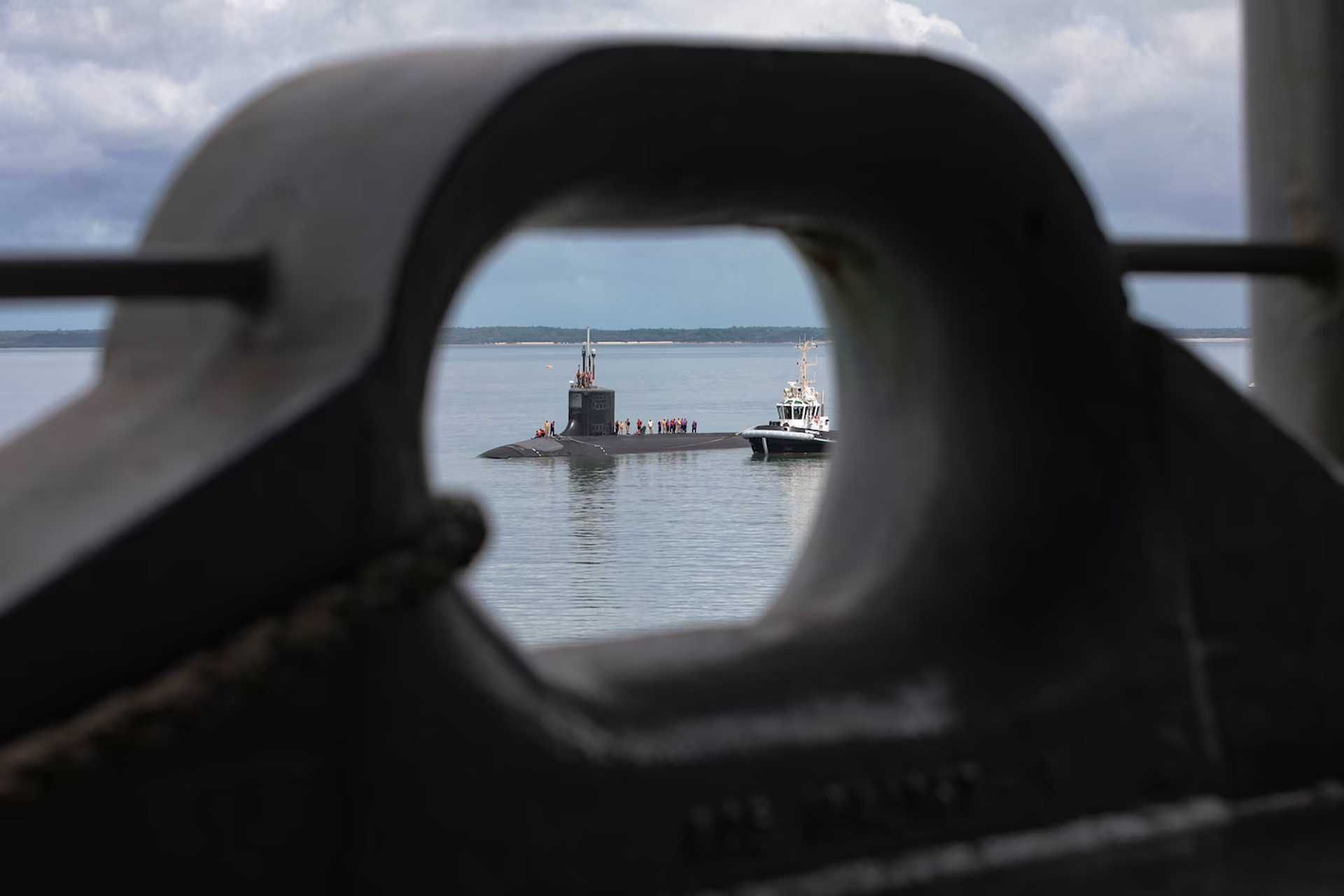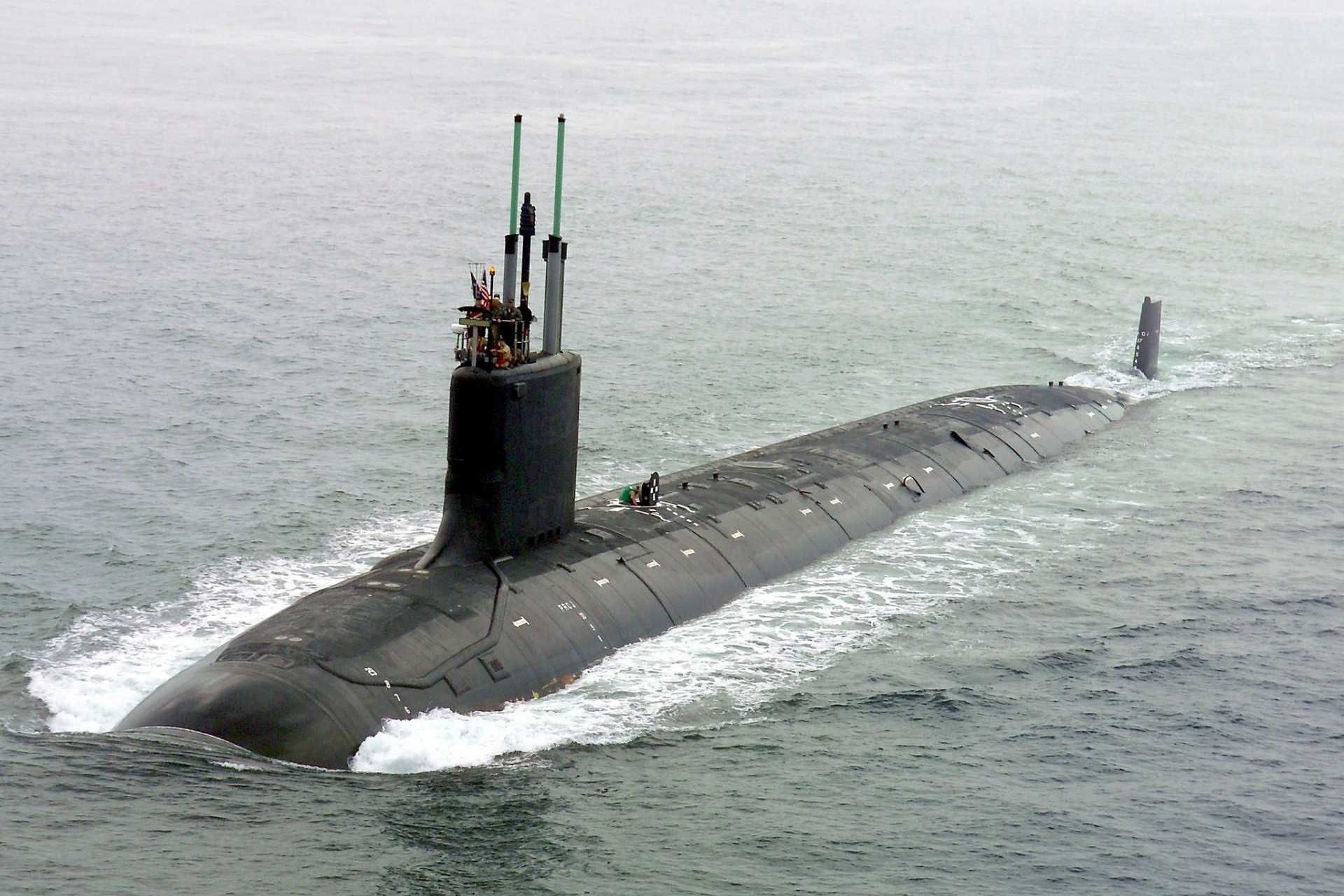Breaking News
U.S. Senator says Australia will build Virginia-class submarines in the future to deter China in the Western Pacific.
At a public discussion hosted by the Hudson Institute on April 30, 2025, U.S. Senators Mark Kelly and Todd Young announced the reintroduction of the bipartisan Ships for America Act, a sweeping legislative effort to rebuild U.S. maritime and shipbuilding capacity. During the event, Senator Kelly declared, “Australia will be at some point here in the future, building Virginia-class submarines, which is critical to the fight in the Western Pacific.” This statement framed Australia’s future production role as integral to the AUKUS trilateral pact and highlighted the growing urgency in Washington to counter China's maritime assertiveness through allied industrial integration and revitalized American shipbuilding.
Follow Army Recognition on Google News at this link

The U.S. Navy currently produces only 1 to 1.2 Virginia-class submarines per year, far below the 2.3 needed to meet its operational requirements and AUKUS obligations. (Picture source: Australian Navy)
The Ships for America Act, formally the Shipbuilding & Harbor Infrastructure for Prosperity & Security for America Act, was originally introduced in December 2024 but failed to pass before the end of the legislative session. Senators Kelly and Young, joined by Representatives John Garamendi (D-CA) and Trent Kelly (R-MS), as well as Senators Lisa Murkowski (R-AK) and John Fetterman (D-PA), have now revived the initiative to respond to the increasing strategic maritime competition with China and ensure the industrial base can sustain both U.S. and allied naval production. The Act was developed with assistance from National Security Advisor Michael Waltz and complements an executive order signed by President Donald Trump in April 2025 to “restore American maritime dominance.” Labor and industry groups, including the Marine Engineers’ Beneficial Association and the Shipbuilders Council of America, have endorsed the bill as a long-overdue corrective to decades of industrial decline.
Senator Kelly, a former naval aviator and graduate of the U.S. Merchant Marine Academy, framed the bill as essential not only to economic revival but also to national security. He referred to the Ships for America Act as a “three-legged stool” involving shipbuilding infrastructure, a revitalized U.S.-flag merchant fleet, and a skilled maritime workforce. Each component is seen as mutually dependent. Kelly stressed that American maritime logistics capacity has fallen to dangerous lows, warning that “we don’t have enough ships, or shipbuilding capacity, to ensure we are ready for the next war.” The Act includes mechanisms such as tax incentives, capital investment inducements, research and development funding, and long-term procurement contracts. It also mandates the Navy to evaluate acquiring logistics and auxiliary vessels from U.S. commercial yards, shifting reliance away from foreign-built ships.
While focused on commercial recovery, the Act explicitly acknowledges its military implications. Kelly emphasized that strengthening commercial shipbuilding will produce “ancillary benefits” for naval construction by expanding the industrial base and workforce. He cited the Philly Navy Yard, now privately operated by a South Korean firm, as an example of untapped capacity that could grow from building two ships annually to ten with proper investment. The overlap between commercial and military shipbuilding is further underscored by the current shortage of tradespeople, particularly welders, and the difficulty in sourcing components like Navy-certified valves. By boosting domestic output, the Act aims to address bottlenecks hampering military shipyards like General Dynamics Electric Boat and HII Newport News Shipbuilding. The Act also calls for a National Maritime Strategy to evaluate industrial readiness, infrastructure needs, and long-term ship procurement planning, all designed to build a resilient maritime foundation.

Currently, the US program has fallen well behind schedule; each Virginia-class submarine now costs approximately $4.5 billion, and cumulative delays total 410 months across the program. (Picture source: US Navy)
The Virginia-class submarine program lies at the center of these concerns. Originally intended to produce two boats annually, the program has fallen well behind schedule. The COVID-19 pandemic exacerbated workforce shortages and supply chain problems, with average build times now exceeding five years per submarine. Only one Virginia-class unit was laid down in 2021, and no deliveries occurred between April 2020 and May 2022. At least five Block IV and five Block V submarines remain under construction with significant delays. The U.S. Navy currently produces only 1 to 1.2 boats per year, far below the 2.3 needed to meet its operational requirements and AUKUS obligations. A 2024 Congressional Research Service report and a National Defense Industrial Association study concluded that U.S. yards are already exceeding their sustainable capacity.
These delays come as the aging Los Angeles-class fleet nears retirement, threatening a potential capability gap in the Navy's undersea force. Each Virginia-class submarine now costs approximately $4.5 billion, and cumulative delays total 410 months across the program. The Pentagon is attempting to stabilize production with a “1+2+Sustainment by 2028” plan, aiming for one Columbia-class SSBN and two Virginia-class SSNs annually, but achieving this will require major investments in workforce training, supplier development, and shipyard modernization. Emergency funding requests, including $5.7 billion in 2024, have been submitted to address production shortfalls, which risk undermining AUKUS commitments and broader U.S. strategic objectives in the Indo-Pacific.
Senator Kelly argued that the Ships for America Act would help reverse these trends by injecting sustained investment and expanding the skilled labor pool. He dismissed claims that commercial and military shipbuilding compete for resources, instead describing a mutually supportive relationship. By rebuilding the commercial fleet and shipyards, the U.S. would also reinforce its naval construction capabilities, improving the overall resilience of the defense industrial base. These efforts are particularly vital in light of AUKUS' obligations to deliver at least three Virginia-class submarines to Australia by the early 2030s.
Under the March 2023 AUKUS submarine deal, Australia is to receive three Virginia-class submarines from the U.S., with an option for two more. The first two will likely be Block IV units transferred from the U.S. Navy, while the third will be a newly built Block VII boat. Deliveries are contingent on U.S. production capacity and legal provisions prohibiting transfers that would degrade Navy readiness. Any sustained production delays may force reconsideration of the timeline or even the number of submarines transferred, raising concerns in both Canberra and Washington. In the meantime, Australian naval officers have already joined the U.S. Navy's Virginia-class submarines after completing nuclear power school, preparing to eventually crew submarines built jointly in both countries.

Under the March 2023 AUKUS submarine deal, Australia is to receive three Virginia-class submarines from the U.S., with an option for two more. (Picture source: US Navy)
The AUKUS framework also includes the SSN-AUKUS next-generation submarine program. Initial units will be constructed by BAE Systems in the U.K. from the late 2020s, followed by production in Adelaide, Australia, by the end of the decade. Australia has committed A$4.6 billion to expand Rolls-Royce’s Raynesway facility in Derby to manufacture nuclear reactor components. The SSN-AUKUS will feature U.S. vertical launch systems and combat systems, ensuring full interoperability. To support its industrial role, Australia has pledged $30 billion AUD over 30 years to create 20,000 jobs, expand infrastructure at Osborne Naval Shipyard, and qualify local suppliers through a pilot program led by Huntington Ingalls and Babcock.
In March 2025, Australia signed a $200 million USD agreement with the United States to acquire MK-48 Mod 7 torpedoes, which will be assembled at the certified Torpedo Maintenance Facility in Western Australia. These weapons are compatible with both the Collins-class and Virginia-class submarines, supporting future fleet integration. Meanwhile, growing skepticism has emerged within Australia. Former Prime Minister Malcolm Turnbull has criticized the AUKUS plan, and analysts from the Australian Strategic Policy Institute have warned that submarines may be permanently based in Australia without full transfer. A RAND report issued in late 2024 highlighted the risk of “permanent ambiguity,” suggesting that production delays could damage alliance trust and recommending consideration of alternatives like France’s canceled Naval Group deal or conventional platforms from Japan, South Korea, or Germany, none of which meet the nuclear capability requirement.
To support the coming transition, the U.S. Navy has increased its presence in Australia. The USS Minnesota visited HMAS Stirling in February 2025, marking the first of several planned port calls this year. These visits will lay the groundwork for Submarine Rotational Force–West, scheduled to begin in 2027, comprising four U.S. and one U.K. submarine deployed from Australian territory. These forward deployments aim to reinforce deterrence and facilitate interoperability with Australian personnel. The integration of allied operational capabilities will form a key element of the Indo-Pacific deterrence strategy.
Senator Kelly’s announcement that Australia will eventually manufacture Virginia-class submarines indicates a significant escalation in AUKUS industrial collaboration. It suggests a hybrid production model, where U.S.-built reactor modules and propulsion systems are exported, while other components are assembled in Australia under strict oversight. Such a plan would require major changes in nuclear regulation, technology transfer protocols, and long-term U.S. support. Nonetheless, this arrangement would ease pressure on U.S. yards, allow distributed manufacturing in the event of wartime disruption, and increase allied resilience.
Strategically, Australia's geographic proximity to contested areas such as the South China Sea enhances the value of hosting and eventually building nuclear-powered submarines. Its expanded industrial and operational role in undersea warfare could reduce the strain on the U.S. Navy while providing a second allied pillar of submarine capability in the region. The plan reflects a generational shift in Australia's defense posture, as well as a broader allied movement toward tightly integrated defense industrial cooperation. If realized, Australian production of Virginia-class or related submarines may not only enhance deterrence against China but also serve as a template for allied military manufacturing partnerships more broadly.


























